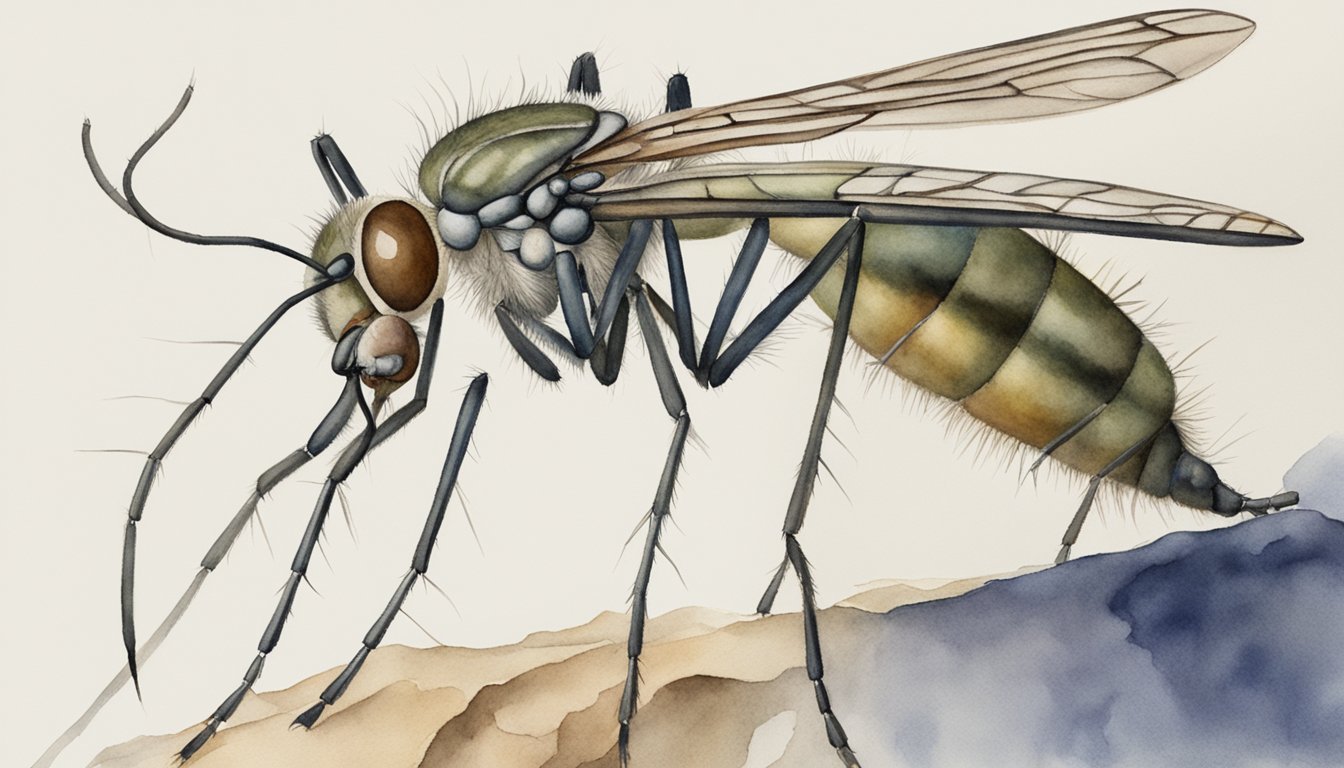Introduction to Hematophagy
Hematophagy refers to a specialized dietary behavior where certain animals feed on blood. This unique form of nourishment is noteworthy for its biological complexity and evolutionary implications.
Overview of Blood-Feeding Behaviors
Hematophagic animals, or blood-feeders, have developed various adaptations to consume the blood of their hosts. Blood, given its rich protein and lipid content, provides a high-energy diet. Examples range from insects such as mosquitoes to mammals like the vampire bats. The blood-feeding process often involves specialized physical traits, for instance, the proboscis of mosquitoes which pierce skin and siphon blood. These behaviors are not merely for sustenance but also influence the ecology and evolutionary pathways of such creatures.
Evolutionary Aspects
The trait of hematophagy has evolved independently across different taxa over millions of years. Fossil evidence suggests the earliest blood feeders date back to the time of the dinosaurs. The journey from early protomosquitoes to modern-day leeches, ticks, and vampire bats underscores a significant biological adaptation to a hematophagic lifestyle. While these creatures share a common diet, the evolution of hematophagy has led to a diversity of feeding mechanisms and host interactions, illustrating the complexities of biological adaptation and survival strategies.
Species and Adaptations

This section explores the diverse group of animals that have evolved unique adaptations to feed on blood. From mammals to birds, each group exhibits specialized behaviors and physiological traits that enable their sanguine diets.
Mammals and Blood-Feeding
The vampire bat is one of the few mammals that has evolved to solely consume blood. Unique adaptations, like their heat sensors to locate blood vessels and anticoagulant saliva, make them efficient at their diet.
Insects and Arachnids
Insects like mosquitoes and bedbugs, and arachnids such as ticks have mouthparts designed for piercing skin and sucking blood. Mosquitoes, for example, play a role in ecosystems as a food source for other animals.
Aquatic Bloodsuckers
Aquatic animals like the lamprey have circular, toothed mouths to attach to and feed from the blood of fish. The candiru, a type of parasitic freshwater catfish, is rumored to invade the urethra of humans, although this is rare and not well-documented.
Birds With a Taste for Blood
The vampire finch demonstrates an unusual adaptation within birds, using its sharp beak to feed on the blood of larger birds. Similarly, the oxpecker, although not a true blood-feeder, assists in removing ticks and parasites from mammals, sometimes consuming blood from the wounds.
Each of these animals has developed a specific set of tools and behaviors to thrive on a diet that, for most species, would be impossible.

